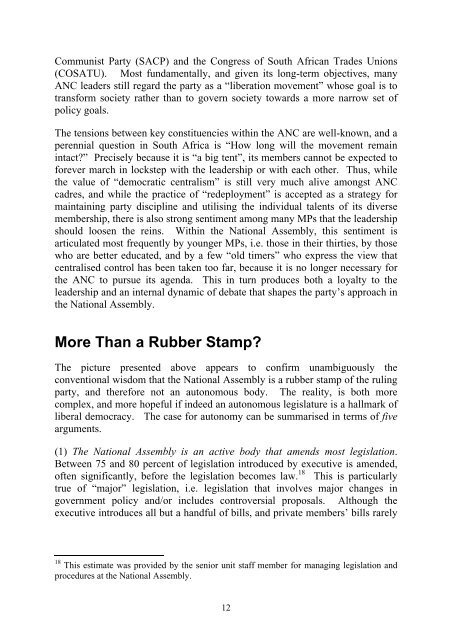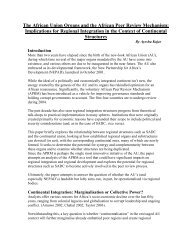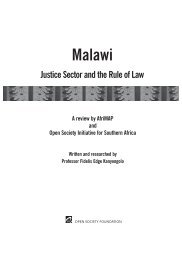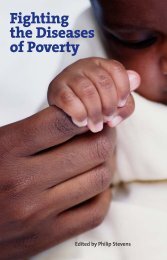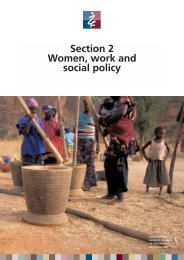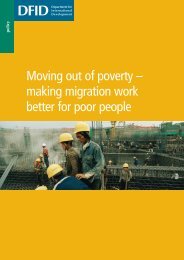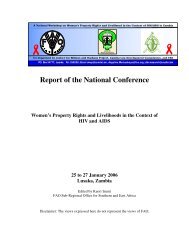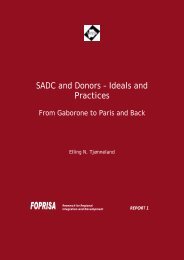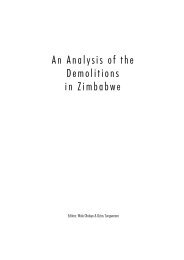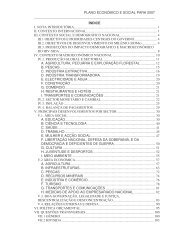400Kb ~ 2 min (33 pages) - SARPN
400Kb ~ 2 min (33 pages) - SARPN
400Kb ~ 2 min (33 pages) - SARPN
Create successful ePaper yourself
Turn your PDF publications into a flip-book with our unique Google optimized e-Paper software.
Communist Party (SACP) and the Congress of South African Trades Unions(COSATU). Most fundamentally, and given its long-term objectives, manyANC leaders still regard the party as a “liberation movement” whose goal is totransform society rather than to govern society towards a more narrow set ofpolicy goals.The tensions between key constituencies within the ANC are well-known, and aperennial question in South Africa is “How long will the movement remainintact?” Precisely because it is “a big tent”, its members cannot be expected toforever march in lockstep with the leadership or with each other. Thus, whilethe value of “democratic centralism” is still very much alive amongst ANCcadres, and while the practice of “redeployment” is accepted as a strategy formaintaining party discipline and utilising the individual talents of its diversemembership, there is also strong sentiment among many MPs that the leadershipshould loosen the reins. Within the National Assembly, this sentiment isarticulated most frequently by younger MPs, i.e. those in their thirties, by thosewho are better educated, and by a few “old timers” who express the view thatcentralised control has been taken too far, because it is no longer necessary forthe ANC to pursue its agenda. This in turn produces both a loyalty to theleadership and an internal dynamic of debate that shapes the party’s approach inthe National Assembly.More Than a Rubber Stamp?The picture presented above appears to confirm unambiguously theconventional wisdom that the National Assembly is a rubber stamp of the rulingparty, and therefore not an autonomous body. The reality, is both morecomplex, and more hopeful if indeed an autonomous legislature is a hallmark ofliberal democracy. The case for autonomy can be summarised in terms of fivearguments.(1) The National Assembly is an active body that amends most legislation.Between 75 and 80 percent of legislation introduced by executive is amended,often significantly, before the legislation becomes law. 18 This is particularlytrue of “major” legislation, i.e. legislation that involves major changes ingovernment policy and/or includes controversial proposals. Although theexecutive introduces all but a handful of bills, and private members’ bills rarely18 This estimate was provided by the senior unit staff member for managing legislation andprocedures at the National Assembly.12


